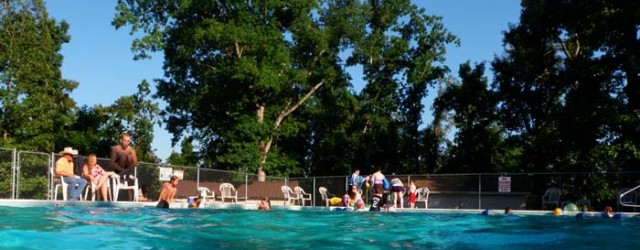A swimming pool can be a great source of family fun and fitness. But it’s important to make safety a priority to protect children and others in and around the water. Some of the most effective ways to prevent drowning include four-sided fencing, swimming lessons, life jackets, and supervision/lifeguarding. Knowing CPR can also save the life of someone who drowns. For best protection, combine several safety measures to most effectively reduce drowning risks.
Fencing
Appropriate pool fencing significantly reduces the risk of drowning. More than half of all swimming pool drownings among young children could be prevented by four-sided fencing that completely separates the pool from the house and the yard. The fence should be at least 4 feet high, and have self-closing and self-latching gates that open outward, with latches that are out of the reach of children.
Portable or inflatable above-ground pools have become increasingly popular, but these pools carry a significant risk of drowning, particularly in boys under the age of 5.5 Because of the flexibility of these pools, the side of the pool can collapse and cause someone to fall into the water and drown. The same safety precautions to prevent access to the water should be followed as for in-ground pools, including four-sided fencing.
Swimming Lessons
Formal swimming lessons and water-safety skills training can start at a young age. In fact, the American Academy of Pediatrics supports swimming lessons as young as age one. The decision to begin swimming lessons should be based on the individual child’s exposure to water, emotional maturity, physical limitations, and health concerns. Participation in formal swimming lessons can reduce the risk of drowning by as much as 88% among young children aged 1 to 4 years, who are at greatest risk of drowning.
Life Jackets
Even in a pool, inexperienced swimmers and young children may benefit from wearing properly fitted life jackets.Do not use air-filled or foam toys, such as “water wings,” “noodles,” or inner-tubes, in place of life jackets for flotation support. These are toys and are not designed to keep swimmers safe.
Supervision
Preventing unintended pool access
Children should never be in or around a pool alone. Barriers to pool access should be used to help prevent young children from gaining access to the pool area without caregivers’ awareness. Four-sided isolation fencing, door locks, gate locks, and alarms that are triggered when someone enters the water are examples of barriers. Most young children who drowned in pools were last seen in the home, had been out of sight less than five minutes, and were in the care of one or both parents at the time.
Safety while in or around the pool
Never leave a small child alone or in the care of another child while in the pool or other water source, even if the child has had formal swimming lessons. When a young child or inexperienced swimmer is in or around water, always be within arm’s length. Adults who are supervising children in the pool should not be distracted by activities such as reading, playing cards, texting or talking on the phone, or mowing the lawn. Drowning can happen very quickly and quietly.
Supervision is important even when there are lifeguards at the pool. While lifeguards enhance safety, their ability to safeguard swimmers has limitations. It’s often another swimmer or bystander who first notices that someone has drowned.
CPR
CPR performed by bystanders has been shown to improve outcomes in drowning victims. For example, starting CPR immediately, rather than waiting for emergency personnel, can help reduce the chance of brain damage.
